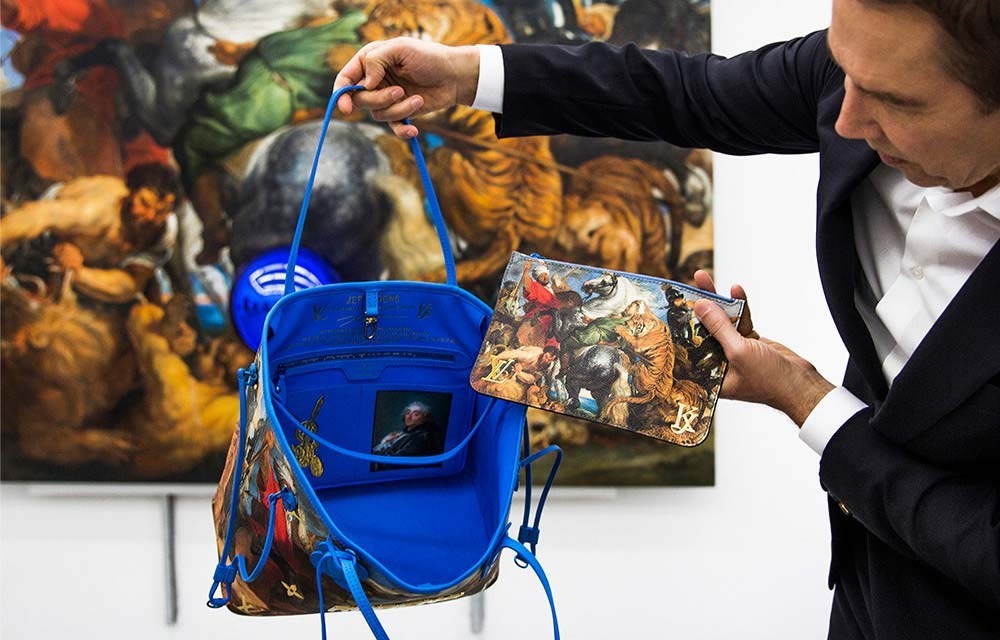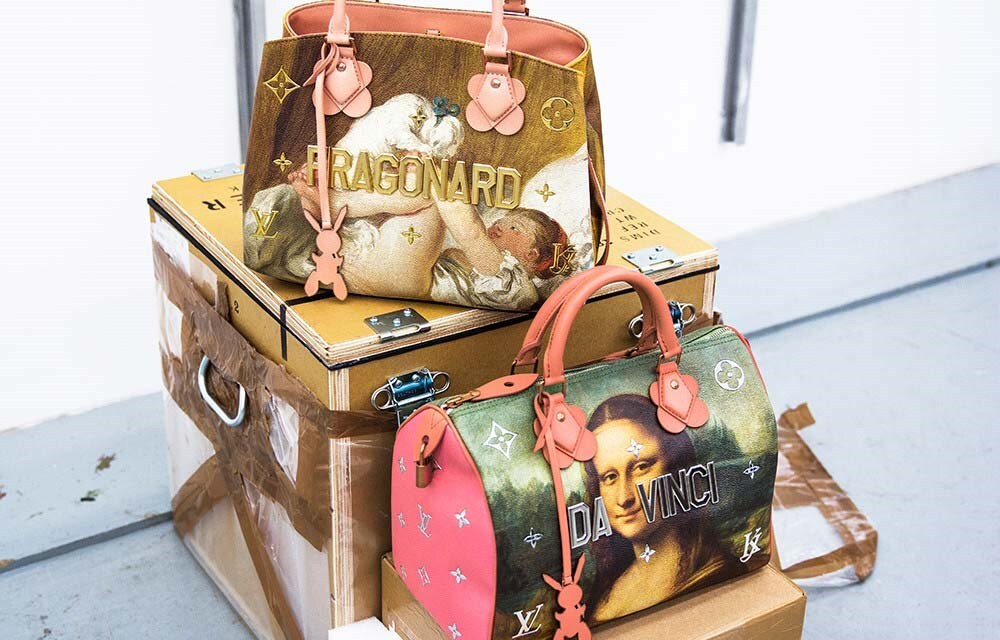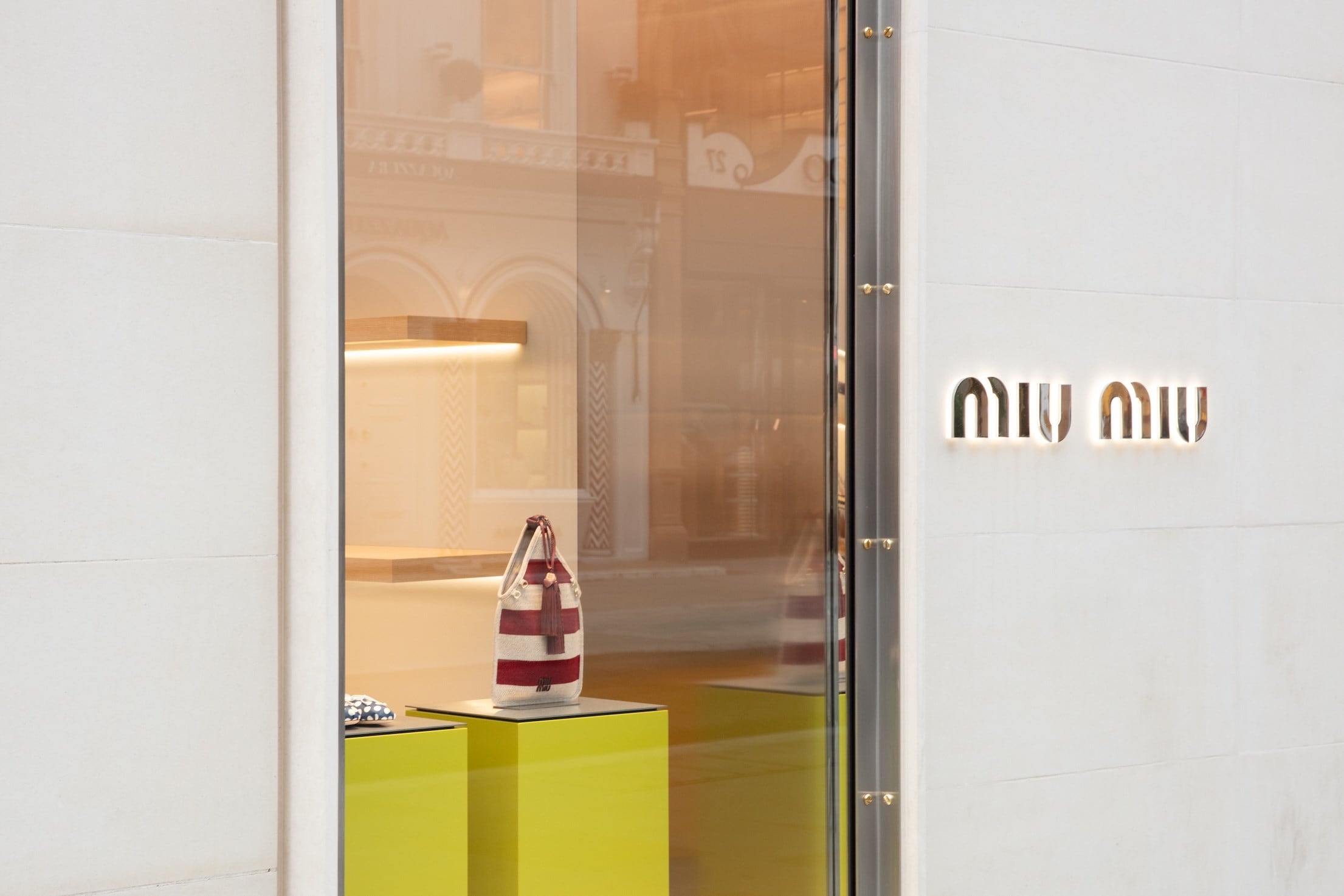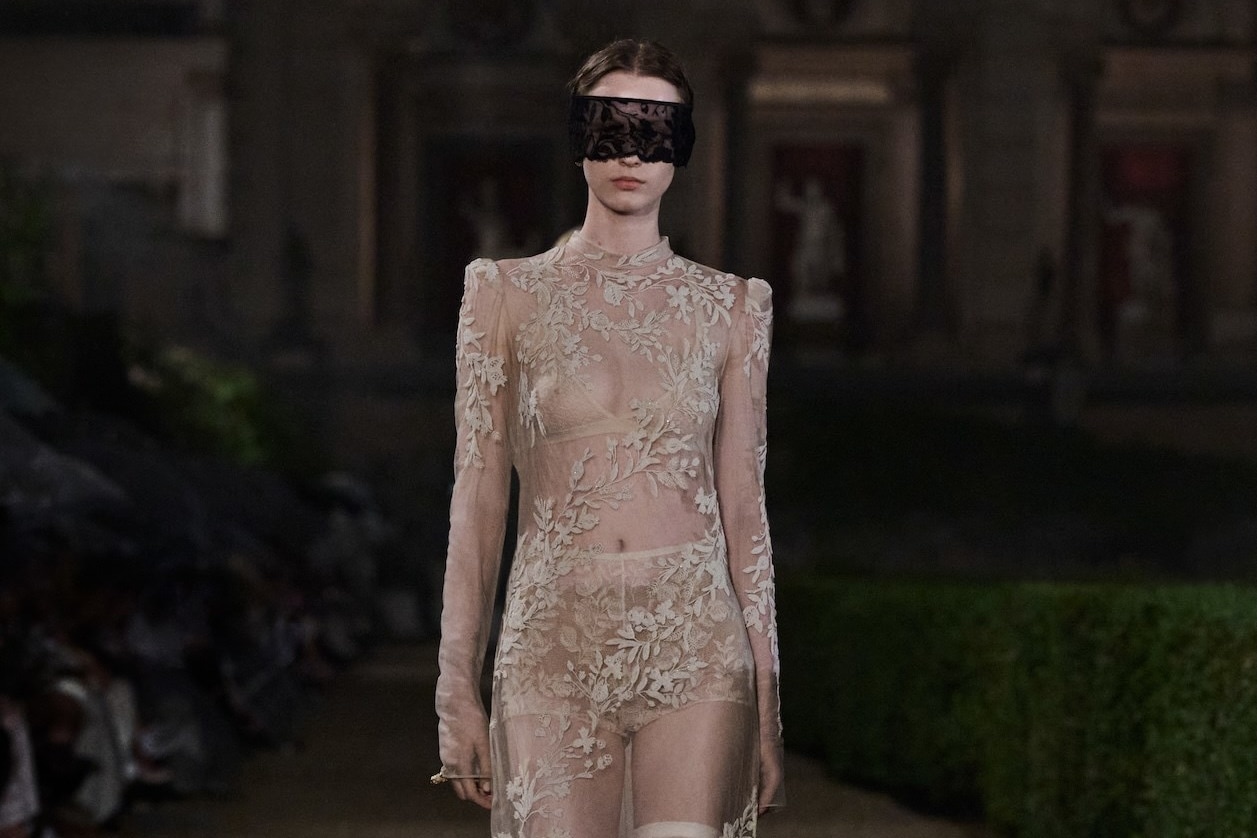A new alliance between Louis Vuitton and Jeff Koons blurs the lines between collaboration and homage
From life-size, self-starred-in porn to building-sized balloon toys wrought in brass, Jeff Koons has created some of the most notorious and notable works of any living contemporary artist. Koons has a penchant for kitsch: Michael Jackson and Bubbles (1998) depicts the late singer and his pet chimpanzee as a gold leaf-painted porcelain ornament, while Puppy (1992), a 40ft terrier made entirely of living flowers guarded the Bilbao Guggenheim for three years. Reworking saccharine iconography and pop culture obsessions, Koons offers a kaleidoscopic lens on contemporary culture and consumption. Suffice to say, the artist makes for an ideal new collaborator for the luxury house of Louis Vuitton. Only a few months ago, the brand unveiled its unlikely but vastly appealing menswear collaboration with cult skatewear brand Supreme – and now Koons’ play on mass market appeal offers a rounded symmetry to the Louis Vuitton partnership roster.

Such a pairing pads out Vuitton’s roll call of artistic endeavours, which range from Fondation Louis Vuitton to handbag projects with artists Stephen Sprouse, Takashi Murakami, Richard Prince and Yayoi Kusama. Just as Vuitton creative consultant and stylist Alister Mackie noted of the brand’s S/S17 menswear collection, it’s easy to transform Louis Vuitton into fetishwear. Like Supreme, there’s something about applying a branded monogram or logo to a wallet or handbag and suddenly, “you gotta have it.” Koons’ new range for the maison subverts this theme, replacing the trademark monogram (bar a few metal-studded logos) with reproduced canonical paintings, flashily emblazoning each item with the artists’ names, making The Mona Lisa the new it bag, and Da Vinci the new Supreme.
Redrawing Vuitton’s iconic bags like the Neverfull and the Keepall, Koons pools imagery from his 2013 series Gazing Ball, for which the artist repainted world-famous works like Manet’s Olympia and Giotto’s Kiss of Judas and planted metallic spheres in front of them. In these mirrored objects, the viewer sees themselves reflected, situated in the painting – forging a playful relationship between these great works and the outside world. “These artists are making reference to other artists, and they find something outside themselves that’s greater than themselves,” Koons explains of his choices of these particular works. “It’s a form of love, and we all practice this every day in our life. If we want to achieve transcendence, we are able to look at even the simplest thing outside ourselves, or the most complex, and find awe and wonderment in that. And our parameters expand.” By planting these paintings onto these status-symbol accessories, Koons further distorts this play on intertextuality. If you can pick up a Mona Lisa tea towel or a fridge magnet, why not a Speedy? There may be no better canvas for compulsive allure.




